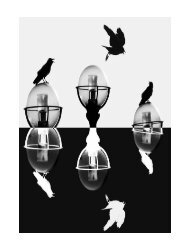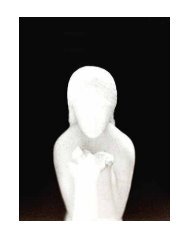Odds and Ends Essays, Blogs, Internet Discussions, Interviews and Miscellany
Collected essays, blogs, internet discussions, interviews and miscellany, from 2005 - 2020
Collected essays, blogs, internet discussions, interviews and miscellany, from 2005 - 2020
You also want an ePaper? Increase the reach of your titles
YUMPU automatically turns print PDFs into web optimized ePapers that Google loves.
And then there was St Kevin and the blackbird. The saint is kneeling, arms stretched out, inside his cell,
but the cell is narrow, so one turned-up palm is out the window, stiff as a crossbeam, when a blackbird
lands and lays in it and settles down to nest. Kevin feels the warm eggs, the small breast, the tucked
neat head and claws and, finding himself linked into the network of eternal life, is moved to pity: now
he must hold his hand like a branch out in the sun and rain for weeks until the young are hatched and
fledged and flown.
The final four stanzas are:
And since the whole thing’s imagined anyhow,
Imagine being Kevin. Which is he?
Self-forgetful or in agony all the time
From the neck on out down through his hurting forearms?
Are his fingers sleeping? Does he still feel his knees?
Or has the shut-eyed blank of underearth
Crept up through him? Is there distance in his head?
Alone and mirrored clear in love’s deep river,
to labour and not to seek reward’, he prays,
A prayer his body makes entirely
For he has forgotten self, forgotten bird
And on the riverbank forgotten the river’s name
Here we see a continuation of the prose-like language but this time with a philosophically discursive register, which
Stanton seems to think makes the poem more problematic than a typical Heaney poem, hence Stanton’s marking it
out for attention, and also, presumably, to place it in the same (or nearly so) aesthetic vicinity as a Prynne poem. As I
say, I didn’t mention this poem in my article so it is not something that I think a discussion of in the way Stanton has
framed one is crucial to the article’s point.
Rob Stanton’s Critique:
I can believe-rereading the interview quotation- that Heaney doesn’t see much in Prynne’s aesthetic, but he
cannot deny it as a necessary thing, as something at least potentially exciting and motivating. I don’t, pace Side, think
this represents a smug faint-praise dismissal on Heaney’s part, largely because he [Heaney] displays little real faith
in his own “alternative”.
Jeffrey Side’s Response:
Stanton can’t be referring to the same Heaney quotation from the interview that motivated my article; otherwise he
could not really honestly claim that the quotation does not represent ‘a smug faint-praise dismissal on Heaney’s
part’. He also hasn’t addressed the point I made in my article about the quotation, which was:
When he says of the alternative poetries in Britain that it ‘is not the charlatan work some perceive it to
be’, who are the “some” he is referring to? No doubt, the main body of the mainstream, but I think, also,
Heaney himself. His acknowledgement of Prynne, here, seems to be little more than an attempt to
distance himself momentarily from the “some” he alludes to. If it were not this, then his saying that,
‘these poets form a kind of cult that shuns general engagement, regarding it as a vulgarity and a
decadence’ recoups the generosity he grants Prynne.
Rob Stanton’s Critique:
John Ashbery, the other “avant-garde” type Heaney mentions by name, offers a promising point of comparison here.
Side is being somewhat disingenuous when he claims Ashbery ‘has yet to receive unreserved approbation by
mainstream criticism’. Although this is true to some extent of the UK, where Ashbery-like Stevens before him-has
never really been embraced wholeheartedly by the critical establishment, a figure who has become the first living
158




